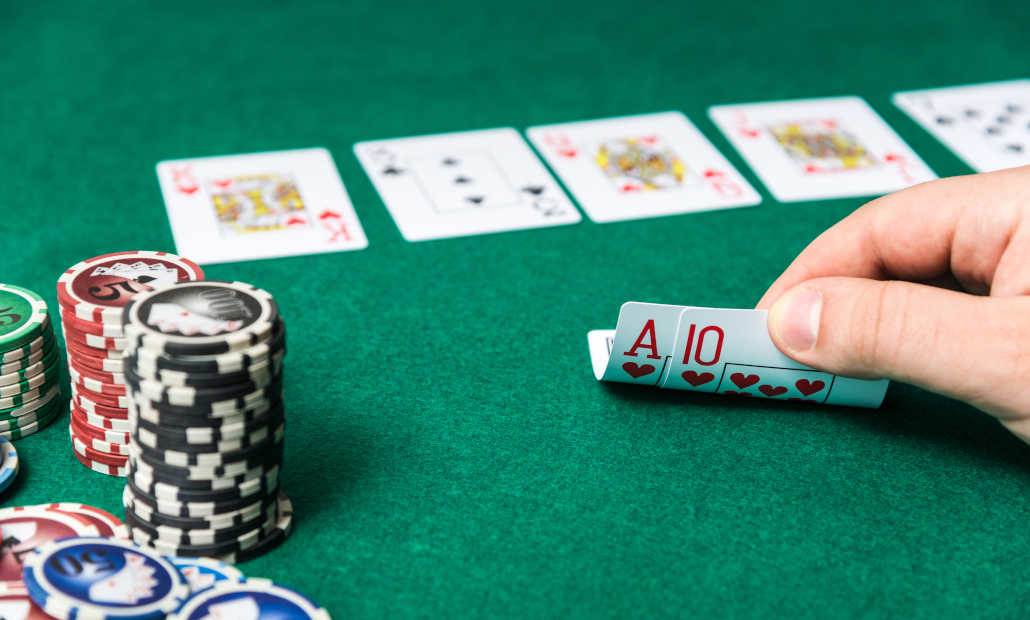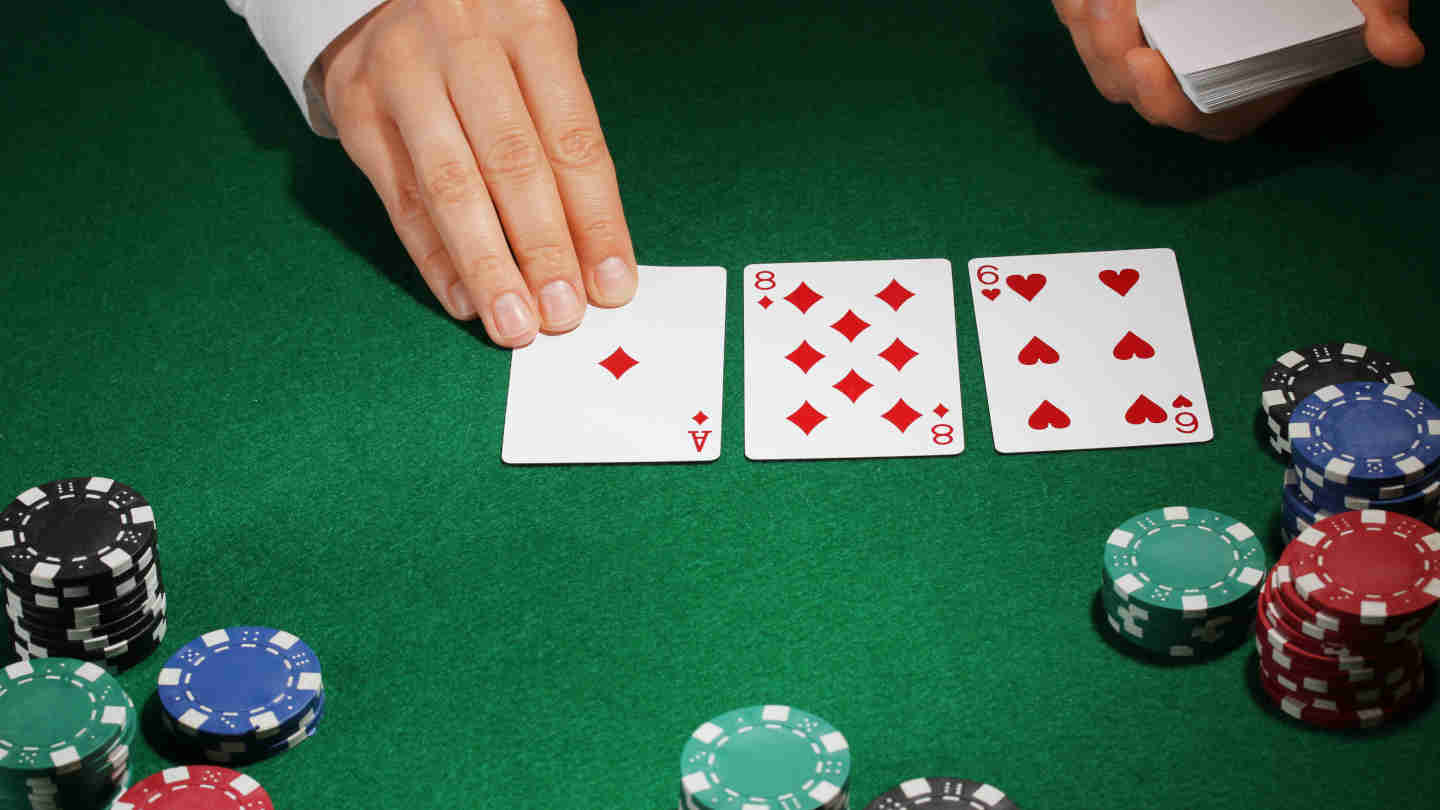Can You Count Cards in Poker?

8 minutes
Card counting has always been a part of the casino culture. However, this card game strategy became even more popular after being featured in Hollywood movies such as: “21,” “Rain Man,” “Hangover,” and “Breaking Vegas”.
In all of the mentioned, card counting looked like a great way to make some easy money playing blackjack, but can the same strategy be applied in other card games such as poker?
Below we answer some of the most important questions about counting cards in poker, such as: Can you count cards in poker? How to count cards in poker? And is card counting in poker legal?
What Is Card Counting?
Card counting is an approach that skilled casino players use in card games to gain an advantage over the casino.
It involves keeping track of the cards that have been dealt in a game and using that information to estimate the probability of certain cards being dealt next.
For example, in blackjack, the goal of the game is to get a hand value of 21 or as close to 21 as possible without going over.
If a player knows that there is a high number of high-value cards left in the deck, he is more likely to hit (take another card) in hopes of getting closer to 21.
The same applies the other way around. If a player knows that there is a high number of low-value cards left in the deck, he might be more likely to stand (keep his current hand value) and keep his bets lower.
How Does Card Counting Work?
The basic idea behind counting cards is to keep track of the ratio of high cards (for example, tens and aces) to low cards (for example two through sixes) remaining in the deck of cards.
This way, a player can gain an advantage if there are more high cards remaining in the decks since this increases the probability of him getting a “natural” blackjack (an ace and a ten-value card), which pays out at a higher rate than other hands.

On the other hand, if there are more low cards remaining in the deck, the player is at a disadvantage because it reduces the likelihood of him getting strong hands.
To count cards, players assign a point value to each card as it is dealt. For example, in the Hi-Lo system, cards 2-6 are given a value of +1, cards 7-9 are given a value of 0, and cards 10-A are given a value of -1.
As the game progresses, the player keeps a running total of the point values. This gives them an idea whether the remaining deck is rich or poor in high cards.
When the deck is rich in high cards, the player can increase their bets to take advantage of the high probability of getting a strong hand,
When the deck is poor in high cards, the player can decrease their bets or even sit out round until the deck becomes more favorable.
Is Card Counting Hard?
While the concept of card counting itself is not necessarily difficult to understand, it can be challenging to execute it effectively.
Card counting requires a good understanding of the rules of the game, the ability to keep track of the cards that have been played, and the mental math skills to adjust betting strategies based on the count.
Additionally, casinos actively monitor for card counters and may take measures to prevent them from playing, so successful card counting requires a degree of subtlety.
Overall, while card counting may not be inherently difficult, it does require a certain level of skill and practice to execute effectively in a casino environment.
It is also important to note that card counting is not a guaranteed way to win, and even successful card counters may still experience losses over time.
Card Counting in Poker
If you are wondering if it is possible to count cards in poker, the answer is yes, although the approach to counting cards in poker is completely different from that used for blackjack.
You see, there are a few different concepts, that are a part of every good poker strategy, which you might interpret as counting cards. These are counting outs and using blockers.

These two approaches are an essential part of every professional poker player’s game arsenal since they allow players to gain additional information during a hand and maneuver their opponents.
Here is how each of these concepts allows poker players to gain information at the table.
Using Blockers to Count Cards in Poker
Unlike blackjack which is played with up to eight standard 52-card decks, most poker games use only one deck. This makes counting cards even easier.
The concept of using blockers is a concept that utilizes the approach of counting cards to gain as much information about the hand as possible.
In other words, poker players use the information that is available to them to make an estimate about the information that is not readily available.
To get a better idea of what we are talking about here is an example of a Texas Hold’em hand in which a player uses the concept of blocker to gain more information about the opponent’s hand.
- Player a holds A♠K♦, Player B’s cards are unknown.
- The community cards are 10♠J♠5♦4♠2♥.
On the river, Player B checks, and Player A has the decision to make, he can either bluff or he can check back and hope that his A-high is good which is not likely.
So to make a decision, Player A utilizes the concept of blocker, in this situation he holds A♠K♦, two cards that are significant for the following reasons:
- Holding the A♠ means that Player A blocks Player B from having the nut flush
- Holding the A♠ means that Player A blocks some of the combination of suited A-3 that Player B could have
By using blockers to remove two very strong hands from his opponent’s range, Player A now knows that he is less likely to run into a big hand from Player B if he decides to make a bluff.
Note that blockers are only a small part of poker strategy, and making decisions based solely on them is less than optimal.
Counting Cards and Counting Outs in Poker
The other concept that is interconnected with counting cards in poker is the concept of outs.
The concept of counting outs is even more significant for good poker strategy than the concept of blockers, and for one simple reason. It applies to more situations and is much easier to implement.
Counting outs in poker means using the information that we have about our hole cards and the community cards to make an estimate of how likely we are to hit our combination during a certain point of a hand.

Here is an example of how counting outs is done in Texas Hold’em.
Let’s say that Player A is holding 7♠8♠, and the flop is A♠4♦J♠. Player A knows that he doesn’t have the best hand at the moment, but he is confident that if he hits a flush, he will win the hand.
So, how many cards will help Player A hit his hand? To calculate this we will use the following information:
- There are 52 cards in the deck
- The deck is made of 4 different suits
- Each suit contains 13 cards of different ranks
- 4 spades are already exposed
To calculate how many cards will help Player A we need to deduct the 4 exposed spades from the total number of spades in the deck.
- 13 – 4 = 9
- There are 9 cards that help player A: K♠Q♠10♠9♠6♠5♠4♠3♠2♠
So, now that he knows how many outs he has, how can he use this information to make the best possible decision? We answer this in the next section.
Calculating Poker Equity by Counting Cards
In order to fully explain how counting cards help poker players calculate equity and make better decisions we will add additional information to the example above.
Player A is playing in a $2/$5 NL Hold’em game. There is $250 in the pot and Player B goes all-in for an additional $250. Player A has $300 left in his stack. Should he make the call or muck his hand?
We already know that there are nine cards in the deck that will help Player A make a flush which he is confidant will be the best hand.
The next step is to calculate the poker equity of Player A’s hand, or, in other words, to calculate how often he is going to hit one of his outs.
In these situations, poker players use the rule of 2 and 4 to roughly calculate their equity. The rule of 2 and 4 says that the player should multiply the number of outs with 4 if there are two more cards or multiply the number of outs with 2 if there is only one card to come.
Since Player A has a decision to make on the flop, there are two more cards to come, so we need to multiply his number of outs (9) with four.
- 9 x 4 = 36%
In this hand, there is a 36% chance that Player A will hit one of his outs by the river.
Figuring Out the Pot Odds
Now the only thing that is left is to calculate the odds he is getting based on the money in the pot and the amount of money he needs to invest.
So, there is $250 in the pot and Player B bets another $250. The pot is now $500, and Player a needs to put an additional $250 if he wants to see the turn and the river.

To calculate the pot odds Player A is getting, we need to divide the amount of money he needs to call ($250) with the amount of money that will be in the pot after he makes the call ($750).
- 250 / 750 = 0.33
And then multiply the result with 100 to get the percentage:
- 33 x 100 = 33%
In this example, Player A needs at least 33% equity to be breakeven on this call, since he has a 36% chance of hitting one of his outs. So, the correct decision would be to make the call.
Is Card Counting in Poker Legal?
Card counting is not only legal in poker, but as you saw, it is an essential part of good poker strategy.
Millions of poker players use this approach every day to make good decisions and win money at the tables.
If you are planning to give poker a go, make sure that you learn how to :count cards,” i.e., learn how to count your outs and calculate your equity.
- Poker Squeeze Play – Which Hands Make the Most Sense for Squeezing? - August 10, 2023
- How to Play Low Pocket Pairs in Texas Hold’em - July 29, 2023
- How to Make Deep Runs in MTTs More Often - July 22, 2023















